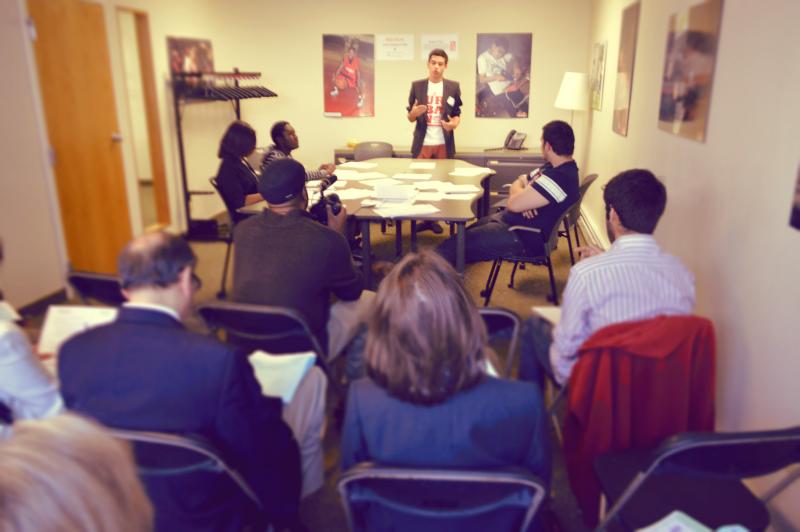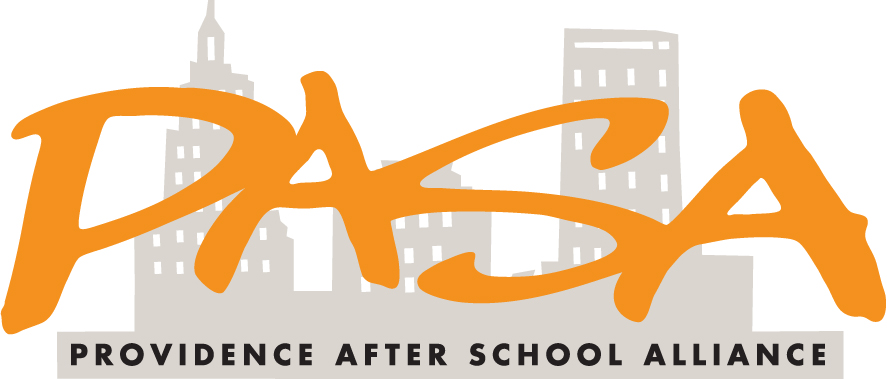
This post, by Jen Rinehart, was originally published on Afterschool Snack, the blog of the Afterschool Alliance.

Pictured: Hub ELO student Rafael demonstrates his debating skills before a panel of community members, business leaders, and educators.
From K-12 classrooms to after-school settings to higher education, there is a growing recognition that we need an education system that measures student success based on competencies rather than on the amount of time that a student spends in the classroom. While the competency-based education movement gained attention and traction in 2013, it’s not a new idea. In fact, some states and communities have been implementing competency-based learning for years with great success.
For example, New Hampshire has taken a competency-based approach to K-12 education for more than a decade. Earlier this year, the movement extended beyond K-12 education and into the higher education realm. Southern New Hampshire University’s College for America is the first in the nation to be approved to receive federal funding based on students demonstrating mastery instead of accumulating a predetermined number of classrom hours. This competency-based structure ensures that students have acquired the most relevant and necessary workforce skills, such as communications and creative thinking.
This move away from seat time at all levels of education is great news for the after-school community. After-school advocates have long been touting the value of learning opportunities that take place outside the traditional classroom.
After-school and summer programs provide learning opportunities that are often offered by diverse community partners on topics that are relevant and interesting to students. These programs reinforce and support in-school learning and provide access to adult experts who can provide enriching learning experiences that are not available during the regular school day. In the process, students master academic and other competencies, and apply their learning in real-world settings.
One obvious demonstration of competency-based learning is allowing students to earn credit for learning that takes place outside the classroom. For example, students in New Hampshire and Rhode Island are able to earn credit through after-school and summer programs. Across the state of Rhode Island, more than 400 students in three districts have earned credit through expanded learning opportunities since 2009.
* Providence After School Alliance serves high school students through The HUB, a student-centered initiative that provides high school credit to students for work they do outside of the school day. Activities include video game development, Android App design and development, debate and environmental science.
* In Central Falls, the school district works with community partners to help students, especially those who are over-age and under-credited and no longer in school, to earn the credits they need to graduate by working with community partners. Within one year of implementing the expanded learning approach, the district was able to go from a 50 percent graduation rate to a 70 percent graduation rate in 2010.
And there are other states that are setting the stage for students to earn credit for after-school learning. For example, Vermont recently passed legislation for dual pathways that includes competency-based learning. In Kentucky, advocates have been working to ensure both legislators and policy-makers recognize and understand the critical role expanded learning programs play in a competency-based system.
Throughout 2014, more policy-makers and educators are likely to turn to competency-based education to help students succeed, especially as Common Core State Standards are implemented. And digital badges (which also gained traction in 2013 and will continue to grow in 2014) are closely linked to competency-based education.
